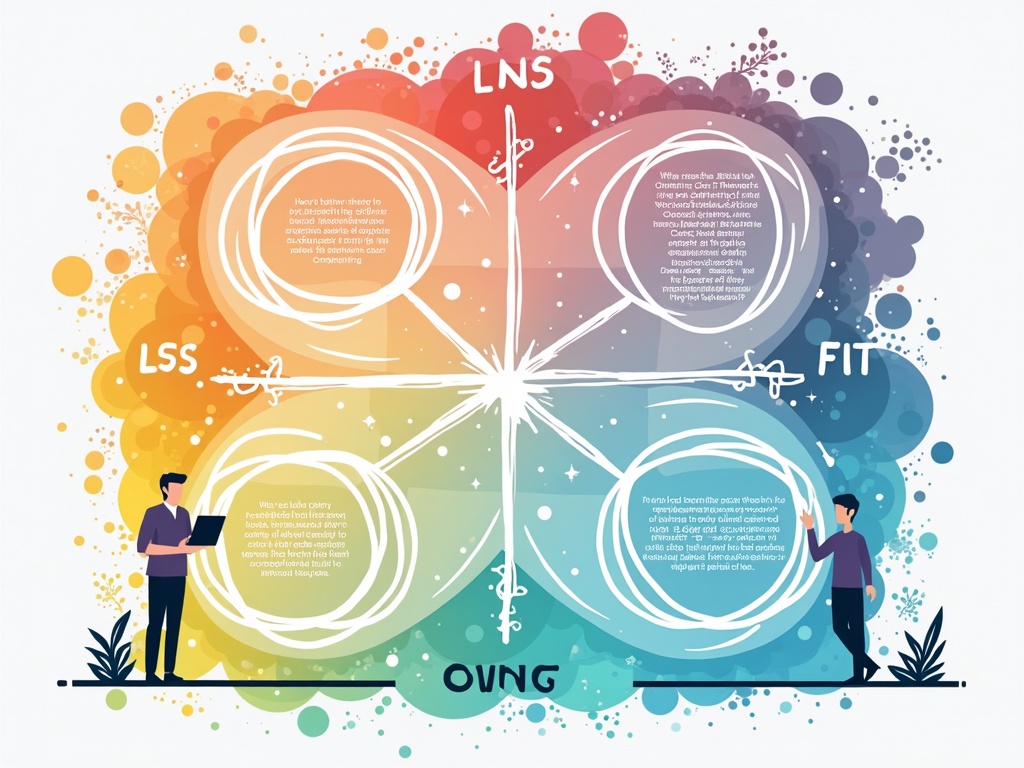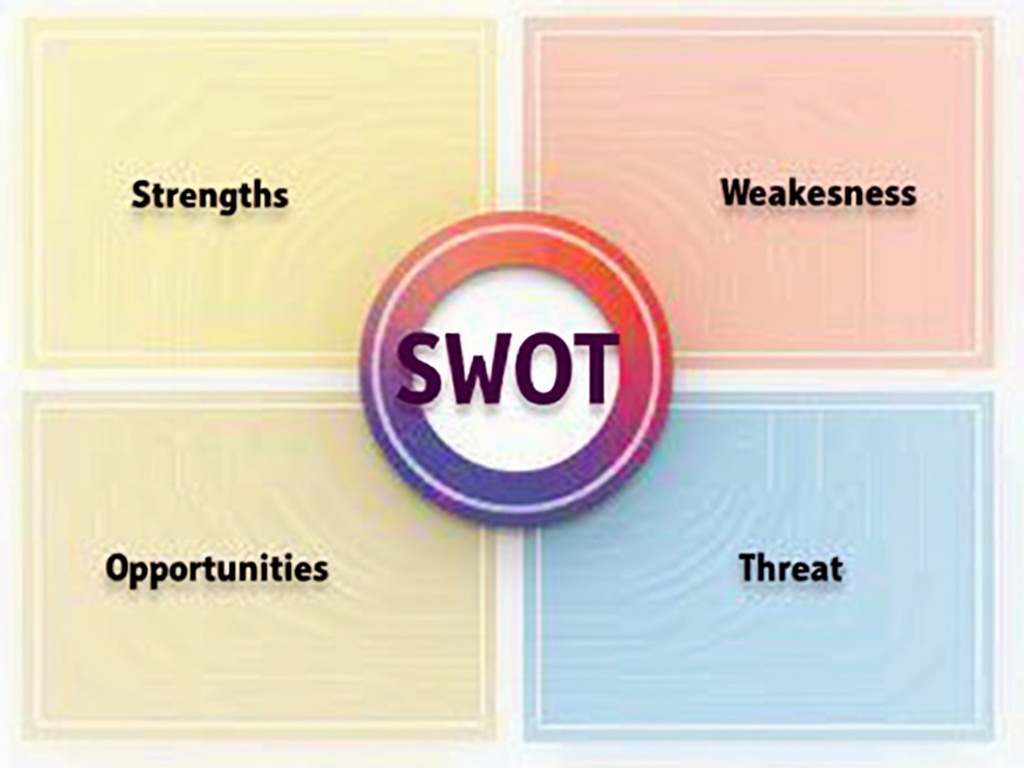Decoding the Competition: A Deep Dive into Competitor SWOT Analysis with Examples
Imagine walking onto a chessboard, where each piece represents a rival company vying for market dominance. To outmaneuver your opponents, you need to understand not only your own strengths and weaknesses but also theirs. That's where a Competitor SWOT Analysis comes in – a powerful strategic tool that allows you to dissect your rivals, anticipate their moves, and ultimately, position yourself for victory.
What is a Competitor SWOT Analysis?
SWOT analysis stands for Strengths, Weaknesses, Opportunities, and Threats. It's a framework used to evaluate the internal and external factors that can affect a business or, in this case, its competitors. A Competitor SWOT Analysis applies this framework specifically to your rivals, giving you a structured view of their current position and potential future trajectory. Understanding their vulnerabilities helps you exploit openings in the market, while recognizing their strengths prepares you to defend against their advances. Ultimately, it's about making smarter, more informed decisions to improve your own performance.
The Four Quadrants of a Competitor SWOT Analysis
**Strengths:What advantages does your competitor possess? What do they do exceptionally well? This could include factors like a strong brand reputation, proprietary technology, a loyal customer base, or efficient operations.
**Weaknesses:Where does your competitor fall short? What areas could they improve? This might involve things like outdated technology, poor customer service, a limited product line, or high overhead costs.
**Opportunities:What external factors could your competitor leverage to their advantage? These are often market trends, unmet customer needs, or changes in the regulatory environment. Perhaps a new demographic segment is emerging, or a technological advancement could revolutionize their production process.
**Threats:What external factors could harm your competitor's business? These could include things like new market entrants, changing consumer preferences, economic downturns, or unfavorable regulations.
Why Conduct a Competitor SWOT Analysis?
Performing a Competitor SWOT Analysis isn't just an academic exercise; it's a critical component of strategic planning. It provides actionable insights that can inform decisions across various aspects of your business.
**Strategic Planning:By understanding your competitors' strengths and weaknesses, you can develop strategies to exploit their vulnerabilities and defend against their strengths. This helps you refine your own competitive advantages (or create new ones!), and carve out a unique position in the marketplace .
**Market Entry:If you're considering entering a new market, a Competitor SWOT Analysis can help you assess the competitive landscape and identify potential barriers to entry. It highlights the players already established and their relative strengths and weaknesses, guiding your market entry strategy.
**Product Development:Understanding your competitors' product offerings and their weaknesses can inspire new product development or improvements to existing products. You can identify unmet customer needs that your competitors aren't addressing and fill those gaps.
**Marketing and Sales:A Competitor SWOT Analysis informs your marketing and sales strategies, helping you craft targeted messages that resonate with customers and differentiate your brand from the competition. It lets you position yourself uniquely.
**Risk Management:Identifying potential threats to your competitors can also reveal potential threats to your own business. This allows you to proactively develop mitigation strategies and protect your market share.
Competitor SWOT Analysis Example: Nike vs. Adidas
Let's illustrate how a Competitor SWOT Analysis works in practice by comparing two athletic apparel giants: Nike and Adidas.
Nike SWOT Analysis
**Strengths:**
Strong Brand Reputation: Nike is one of the most recognizable and valuable brands globally.
Innovative Products: Nike is known for its cutting-edge footwear and apparel technology (e.g., Air Max, Flyknit).
Extensive Distribution Network: Nike has a global distribution network, including company-owned stores, retail partners, and e-commerce platforms.
Powerful Marketing: Nike invests heavily in marketing and endorsements, associating its brand with high-profile athletes and events.
**Weaknesses:**
Higher Price Point: Nike products tend to be more expensive than those of some competitors, potentially limiting accessibility for price-sensitive customers.
Dependence on Footwear: While Nike offers a wide range of products, it's heavily reliant on footwear sales.
Labor Practices Concerns: Nike has faced criticism regarding labor practices in its supply chain.
**Opportunities:**
Growing Athleisure Market: The increasing popularity of athleisure wear presents a significant growth opportunity for Nike.
Expansion in Emerging Markets: Expanding into emerging markets like India and Southeast Asia could fuel future growth.
Sustainable Products: Developing more sustainable products and practices could appeal to environmentally conscious consumers.
Personalized Experiences: Leveraging data to offer personalized product recommendations and shopping experiences.
**Threats:**
Intense Competition: The athletic apparel market is highly competitive, with numerous established players and emerging brands.
Changing Consumer Preferences: Shifting consumer preferences and trends could impact demand for Nike products.
Economic Downturns: Economic downturns could reduce consumer spending on discretionary items like athletic apparel.
Counterfeit Products: The proliferation of counterfeit Nike products can damage the brand's reputation and erode sales.
Adidas SWOT Analysis
**Strengths:**
Established Brand: Adidas is a well-established and respected brand with a long history.
Strong European Presence: Adidas has a particularly strong presence in Europe.
Diverse Product Portfolio: Adidas offers a diverse range of products, including footwear, apparel, and accessories, catering to various sports and lifestyles.
Partnerships and Collaborations: Adidas collaborates with designers, artists, and celebrities to create unique and appealing products.
**Weaknesses:**
Weaker Brand Recognition in North America: Compared to Nike, Adidas has weaker brand recognition in the crucial North American market.
Supply Chain Issues: Adidas has faced supply chain challenges, impacting its ability to meet demand for certain products.
Slower Innovation: Adidas is sometimes perceived as being less innovative than Nike in terms of product technology.
**Opportunities:**
Growing E-commerce Sales: Expanding its e-commerce presence and capabilities can drive sales and improve customer experience.
Focus on Sustainability: Emphasizing sustainable materials and production processes can attract environmentally conscious consumers.
Capitalizing on Retro Trends: Leveraging retro styles and designs can appeal to nostalgic consumers.
**Threats:**
Competition from Nike: Nike remains a dominant force in the athletic apparel market, posing a significant threat to Adidas.
Rising Raw Material Costs: Increasing raw material costs can impact Adidas's profit margins.
Geopolitical Instability: Geopolitical instability and trade tensions can disrupt Adidas's supply chain and operations.
How to Conduct Your Own Competitor SWOT Analysis: A Step-by-Step Guide
Ready to put this knowledge into action? Here's a step-by-step guide to conducting your own Competitor SWOT Analysis:
1. **Identify Your Key Competitors:Start by identifying your direct and indirect competitors. Direct competitors offer similar products or services to the same target market. Indirect competitors offer different products or services that meet the same customer need.
2. **Gather Information:Conduct thorough research on each competitor. This may involve:
**Website Analysis:Review their website for information about their products, services, pricing, marketing messages, and company information.
**Financial Reports:Analyze their financial reports (if publicly available) to assess their financial performance and stability.
**Social Media Monitoring:Track their social media activity to understand their marketing strategies, customer engagement, and brand perception.
**Industry Reports:Consult industry reports and market research to gain insights into their market share, trends, and future outlook.
**Customer Reviews:Read customer reviews on websites like Yelp, Google Reviews, and Amazon to understand customer perceptions of their products and services.
**News Articles and Press Releases:Stay informed about their activities through news articles, press releases, and other publications.
3. **Organize Your Findings:Create a SWOT matrix for each competitor, dividing it into the four quadrants: Strengths, Weaknesses, Opportunities, and Threats.
4. **Analyze the Data:Critically analyze the information you've gathered and identify key themes and patterns. Look for areas where your competitors are strong, weak, and vulnerable.
5. **Develop Actionable Strategies:Use the insights from your Competitor SWOT Analysis to develop strategies to:
**Exploit Competitor Weaknesses:Identify opportunities to capitalize on your competitors' shortcomings. For example, if a competitor has poor customer service, you could focus on providing exceptional customer support.
**Defend Against Competitor Strengths:Develop strategies to protect your market share from your competitors' strengths. This might involve differentiating your products or services, improving your own performance in areas where they excel, or forming strategic alliances.
**Leverage Opportunities:Identify opportunities that your competitors are not yet exploiting and capitalize on them. This could involve entering new markets, developing new products, or targeting new customer segments.
**Mitigate Threats:Develop strategies to mitigate potential threats to your business. This might involve diversifying your product offerings, improving your operational efficiency, or building stronger relationships with your customers.
6. **Regularly Update Your Analysis:The competitive landscape is constantly evolving, so it's essential to regularly update your Competitor SWOT Analysis. This will ensure that your strategies remain relevant and effective.
Tips for an Effective Competitor SWOT Analysis
**Be Objective:Strive for objectivity and avoid letting personal biases influence your analysis.
**Focus on Actionable Insights:The goal of a Competitor SWOT Analysis is to generate actionable insights that can inform your business decisions.
**Prioritize Your Efforts:Focus on analyzing your most important competitors first.
**Involve Multiple Stakeholders:Gathering input from different departments within your organization can provide a more comprehensive perspective.
**Keep it Concise:Avoid overwhelming yourself with too much information. Focus on the most relevant and important factors.
Conclusion: Turning Intelligence into Competitive Advantage
A Competitor SWOT Analysis is more than just a matrix; it's a strategic compass that guides you through the complexities of the competitive landscape. By understanding your rivals' strengths, weaknesses, opportunities, and threats, you can make informed decisions, develop effective strategies, and ultimately, gain a competitive edge. So, embrace the power of analysis, and transform intelligence into a powerful weapon in your business arsenal. The chessboard awaits.


